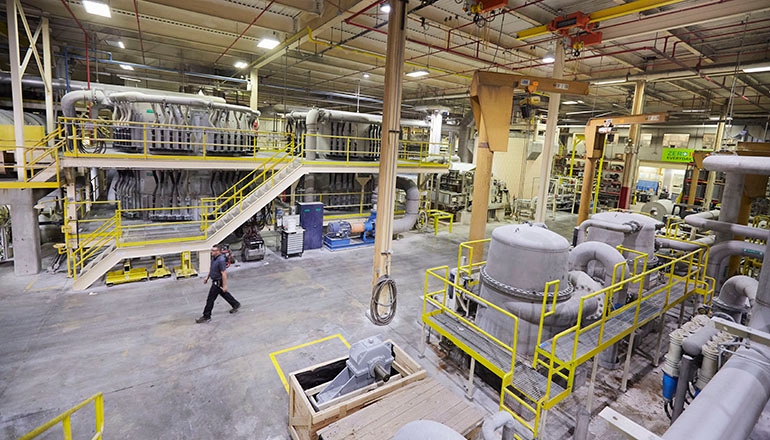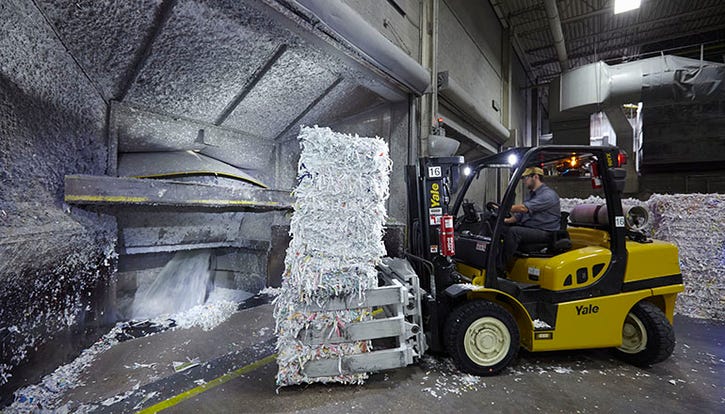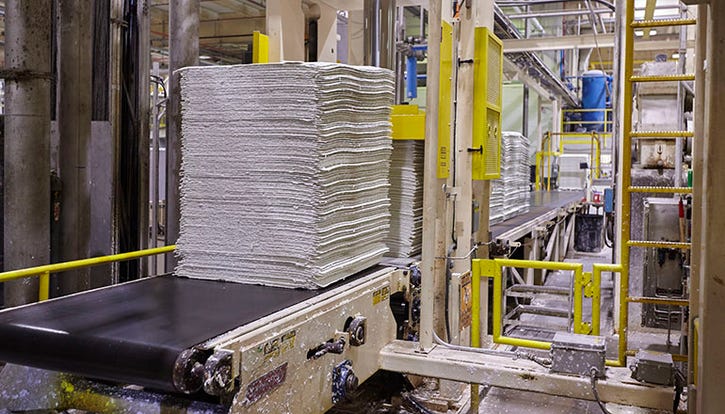Sustana Group is working to address the issues around packaging via its Sustana Fiber and Rolland Paper divisions.

In an ideal world, all packaging would be reused, recycled or composted. But this is not happening, and the packaging industry is facing scrutiny while working to address challenges to prevent waste.
The whole supply chain is up against headwinds, such as dwindling overseas markets, a glutton of materials with no home on the domestic front and limited collection mechanisms and processing capabilities. Meanwhile, public awareness is growing around consequential environmental problems.
Sustana Group is working to address the issues around packaging through its two divisions: Sustana Fiber and Rolland Paper.
Sustana’s paper division has products made from 30 to 100 percent recycled material. On the fiber side, product is made from 100 percent post-consumer waste papers.
The fiber side alone makes about 230,000 tons of premium recycled material a year, used in paper food packaging and tissue products. This equates to 2.2 million pounds of wastepaper that’s recovered and recycled daily. Sustana Fiber recycles enough paper annually to reduce landfill space by more than 1 million cubic yards a year.

“Sustainability for us is very important. One of Sustana Group’s mandates is to reuse and recycle all we can to avoid landfill. We recycle most products, using the material to make another product,” says Michele Bartoloni, Sustana Group’s senior marketing director.
Sustana Group’s goal is to be the primary supply chain to end users of fiber and paper products.
It has two fiber facilities—one in De Pere, Wis., and the other in Lévis, Quebec, Canada. The De Pere facility produces Food and Drug Administration (FDA)-compliant food grade packaging made from 100 percent post-consumer recycled paper, mainly for foodservice providers. The product, branded as EnviroLife, goes into cups, food wraps and food containers. EnviroLife generates 26 percent less greenhouse gas emissions throughout its lifecycle and requires nine times less water to produce than virgin fiber.
Starbucks is among Sustana’s larger retail partners, both as a materials supplier and end user.
“We work with them on a closed loop system where we take their cups and make pulp to produce more cups,” says Bartolini.
Sustana brings in mixed fiber that can be sorted and leverages its automated technology to remove liners from paper cups; chemicals are applied to break down the fiber and clean it. It comes out as sheets of pulp that go back into the manufacture of other products, explains Renee Yardley, senior vice president of sales and marketing for Sustana Group.
The company also purchases sorted office papers and cartons, repurposing fibers to make printing and commercial fiber and tissue, which is sold to mills and used at its own paper mill, Rolland.
“There’s been concern on the part of consumers [about accumulating packaging and paper waste], which we see more and more. Businesses are responding by taking the lead in figuring out what to do with recyclable materials. And we are part of that solution,” says Yardley.
In addition to its processing capabilities, the company has done a little work in collections, including conducting a pilot for Starbucks whereby the company collected and processed the retailer's used paper cups. Sustana Fiber continues to collect and process these materials.

“The Starbucks pilot was proof of concept. We could show that we can remove the liners in the cups and turn them back into fiber. So, basically, if they can be collected, they can be recycled,” says Yardley.
Collection infrastructure, sorting and reprocessing capabilities must all be part of the diversion and recycling equation, says Tristanne Davis, senior manager for the Sustainable Packaging Coalition (SPC).
She points to the job of dealing with coffee cups that Yardley discussed. “They technically are recyclable, but some de-inking pulp mills do not have technology to remove plastic coating. And most communities don’t collect them,” she says.
Plus, there must be end markets that will purchase this material, and establishing these markets can be difficult, especially with food packaging.
“Companies are challenged to find a consistent supply of recycled materials that is food grade, at the right price and that meets all their specs. That’s the big challenge for the food packaging industry in building end markets. And Sustana is working to address the problems. It has stepped up and become a leader in this space, including working to address collection, reprocessing technologies and end markets. This is the type of systems thinking SPC tries to advocate for,” says Davis.
About the Author(s)
You May Also Like




